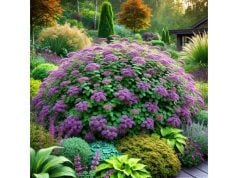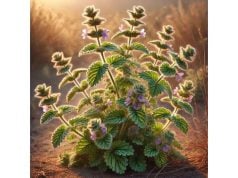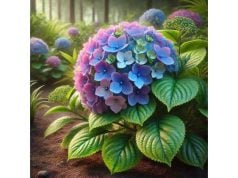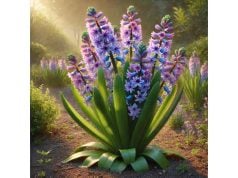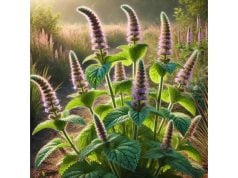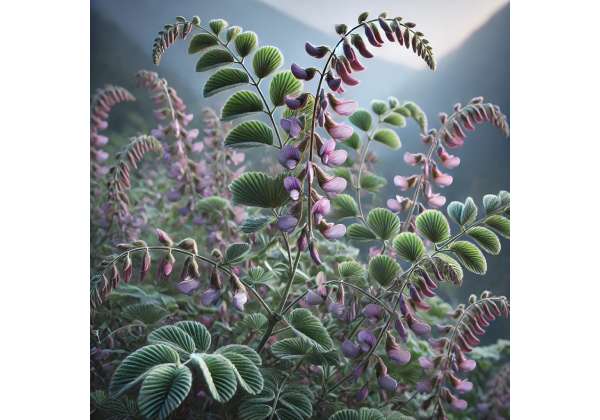
Himalayan Indigo is a time-honored herb revered for its striking natural hue and versatile healing properties. Traditionally used in both medicinal and cosmetic applications, this herb has captured the attention of herbalists and modern scientists alike. Its unique blend of active compounds provides antioxidant, anti-inflammatory, and antimicrobial benefits that contribute to overall wellness. In today’s fast-paced world, Himalayan Indigo serves as a natural remedy for skin care, digestion, and immune support. Explore this complete guide to uncover its botanical intricacies, chemical profile, health benefits, practical uses, and the latest scientific research.
Table of Contents
- Botanical Insights and Identification
- Chemical Profile and Active Elements
- Health Perks and Core Attributes
- Practical Applications and Safety Measures
- Evidence-Based Research and Notable Studies
- Frequently Asked Questions
Botanical Insights and Identification
Himalayan Indigo, known scientifically as Indigofera heterantha (with variations across related species), thrives in the rugged terrains and high altitudes of the Himalayan region. This herb is a member of the Fabaceae family, often recognized for its deep blue pigments and versatile applications in traditional medicine. The plant exhibits pinnate leaves with a delicate yet intricate structure, and its clusters of small, fragrant flowers typically range from pale blues to rich indigo shades. Growing in well-drained, nutrient-poor soils, Himalayan Indigo has adapted to both sunny exposures and cooler, moist climates, making it resilient against environmental stressors.
The morphology of Himalayan Indigo is marked by its slender, arching stems and compound leaves that provide a subtle, feathery texture. Its root system is both fibrous and extensive, which aids in water absorption and anchorage in rocky terrains. Botanists note that the plant’s distinctive flower arrangement not only attracts pollinators like bees and butterflies but also plays a critical role in its reproduction. Seed pods, elongated and slightly curved, contain several small, light seeds that are dispersed by natural forces such as wind and water runoff.
From a taxonomical perspective, Himalayan Indigo has been the subject of numerous studies aiming to classify its variants. Variations in leaf morphology and pigment concentration have led to ongoing debates among botanists regarding its precise subspecies classification. Despite this complexity, the herb’s role in local ecosystems remains clear—it contributes significantly to soil stabilization and serves as a nectar source for indigenous pollinators. Traditional knowledge also holds that the vibrant blue dye derived from the leaves and stems has both ceremonial and therapeutic significance.
The cultivation of Himalayan Indigo often involves organic farming techniques, respecting its natural habitat while encouraging sustainable harvesting practices. Farmers and herbalists alike emphasize the importance of maintaining the ecological balance, as overharvesting can lead to soil degradation and diminished plant populations. Modern agricultural research is investigating ways to optimize yield while preserving the plant’s genetic diversity.
In terms of identification, field experts rely on a combination of morphological markers such as leaf shape, flower color, and growth pattern. Detailed herbarium records and photographic documentation support the classification process, ensuring that enthusiasts and researchers can distinguish Himalayan Indigo from other indigo-producing species. The integration of modern genetic tools has further refined its identification, offering insights into its evolutionary lineage and adaptation mechanisms. These combined efforts have paved the way for enhanced cultivation methods and more precise applications in natural remedies and cosmetic formulations.
The rich history of Himalayan Indigo, interwoven with ancient traditions and modern science, underlines its cultural and medicinal importance. As more studies validate its therapeutic properties, the herb continues to secure its place in both historical texts and contemporary wellness discussions. Its resilience in harsh environments not only makes it a botanical marvel but also a promising candidate for sustainable agriculture and environmental conservation initiatives. Researchers, herbalists, and nature enthusiasts celebrate its dual role as both a natural dye and a potent medicinal herb, ensuring its legacy for generations to come.
Chemical Profile and Active Elements
The healing prowess of Himalayan Indigo can be largely attributed to its diverse array of active compounds. These phytochemicals work synergistically to deliver its potent medicinal benefits. Below is an in-depth examination of the key compounds identified in Himalayan Indigo and an analysis of their individual properties:
- Indirubin
Indirubin is one of the primary active constituents responsible for the herb’s anti-inflammatory and anticancer activities. Studies have shown that it can modulate various cellular signaling pathways, thereby inhibiting abnormal cell growth. Its structure is similar to other bis-indole alkaloids, and it plays a critical role in regulating immune responses. - Indigo
The signature compound, Indigo, is renowned for its deep blue color and has historical significance in textile dyeing. Beyond its aesthetic appeal, Indigo also exhibits antioxidant properties that help neutralize free radicals. Additionally, it contributes to skin rejuvenation when used in topical formulations. - Isatin
Isatin is a naturally occurring compound that has garnered interest due to its potential neuroprotective and antimicrobial effects. By interfering with bacterial growth and supporting neural health, Isatin serves as a multifaceted agent in both internal and external therapeutic applications. - Tryptanthrin
Recognized for its antimicrobial and anti-inflammatory properties, Tryptanthrin is another crucial element found in Himalayan Indigo. It has been observed to combat a variety of pathogens while also supporting the body’s natural defenses against oxidative stress. - Flavonoids (Quercetin and Kaempferol)
The herb is rich in flavonoids, including quercetin and kaempferol, which are known for their strong antioxidant capacity. These compounds help in reducing inflammation and protecting cellular structures from oxidative damage. Their presence in Himalayan Indigo also contributes to cardiovascular health by promoting healthy blood flow and reducing lipid peroxidation. - Saponins
Saponins in Himalayan Indigo act as natural surfactants, which not only aid in the absorption of other compounds but also possess expectorant and anti-inflammatory properties. They have been used traditionally to support respiratory health and to enhance the overall bioavailability of herbal extracts. - Tannins
Tannins contribute to the herb’s astringent properties, making it effective in treating skin irritations and minor wounds. Their ability to contract tissues and reduce bleeding makes them valuable in traditional wound-healing practices. - Essential Oils
Although present in smaller quantities, the essential oils extracted from Himalayan Indigo have been found to possess mild antiseptic properties. These volatile compounds enhance the herb’s overall aroma and contribute to its calming, therapeutic effects when used in aromatherapy and topical applications.
Each of these compounds plays a significant role in the multifaceted health benefits of Himalayan Indigo. Researchers continue to explore the interactions between these chemicals, aiming to harness their full potential in modern pharmacology. Laboratory studies and clinical trials are increasingly focusing on how these bioactive ingredients can be isolated and used to develop targeted treatments for various ailments. The complexity of the chemical profile also suggests potential synergistic effects, where the combined action of these compounds produces a more potent therapeutic outcome than any single component alone.
Moreover, the extraction methods used to isolate these compounds are evolving, with modern techniques such as supercritical fluid extraction and high-performance liquid chromatography enhancing yield and purity. These advancements not only improve the efficacy of Himalayan Indigo extracts but also ensure that they meet stringent quality standards for medicinal and cosmetic products. As research progresses, the full spectrum of Himalayan Indigo’s phytochemical properties continues to reveal promising avenues for both traditional and contemporary applications.
Health Perks and Core Attributes
Himalayan Indigo boasts an impressive range of health benefits that have been validated through centuries of traditional use and modern scientific investigation. This herb is celebrated for its ability to support multiple body systems, offering a natural remedy that addresses both acute and chronic health concerns.
One of the standout properties of Himalayan Indigo is its robust anti-inflammatory action. By mitigating inflammation at the cellular level, it helps to alleviate pain and reduce the risk of chronic conditions such as arthritis and cardiovascular disease. In addition to this, the herb’s potent antioxidant effects play a crucial role in combating oxidative stress—a key factor in the aging process and numerous degenerative diseases.
Another critical benefit of Himalayan Indigo is its antimicrobial capacity. The bioactive compounds within the herb have been shown to inhibit the growth of certain bacteria and fungi, making it a valuable addition to treatments for skin infections and minor wounds. This antimicrobial activity also extends to oral health, where it can help in the prevention and management of periodontal issues.
Himalayan Indigo is equally effective in supporting the immune system. Its active constituents stimulate various immune pathways, enhancing the body’s natural defenses against pathogens. This immunomodulatory effect is particularly beneficial during seasonal changes or periods of heightened vulnerability to infections.
Furthermore, the herb contributes to skin health in remarkable ways. When applied topically, its astringent and antioxidant properties help reduce blemishes, even out skin tone, and promote healing of acne scars. Its use in traditional cosmetic formulations has been passed down through generations, and modern dermatological research is beginning to confirm these longstanding claims.
Additional health advantages include:
- Digestive Support: The herb’s natural compounds aid in soothing gastrointestinal disturbances and promoting healthy digestion. Its mild carminative properties help reduce bloating and gas.
- Respiratory Aid: When used in herbal teas or inhalants, Himalayan Indigo can help ease respiratory congestion and soothe irritated airways.
- Stress Relief: The calming aroma of the herb, combined with its mild sedative effects, contributes to stress reduction and improved sleep quality.
- Detoxification: Himalayan Indigo is sometimes incorporated into detox regimens, helping to stimulate liver function and promote the elimination of toxins from the body.
These multifarious benefits position Himalayan Indigo as a truly holistic remedy. Its extensive range of therapeutic applications makes it a favorite among natural health practitioners, while its integration into modern skincare formulations continues to grow. By addressing both internal and external health challenges, this herb offers a comprehensive approach to wellness that aligns with today’s emphasis on preventive care and natural healing.
The growing body of scientific literature reinforces the efficacy of Himalayan Indigo in addressing a myriad of health concerns. As more clinical studies validate its traditional uses, both consumers and healthcare professionals are increasingly turning to this herb as a safe, natural alternative to synthetic drugs. Its diverse range of properties—from antioxidant to immunomodulatory—ensures that Himalayan Indigo remains at the forefront of herbal therapeutics and natural wellness trends.
Practical Applications and Safety Measures
Himalayan Indigo finds its way into an array of applications, making it a versatile component in both traditional remedies and modern formulations. Its uses span from culinary enhancements and natural dyeing to potent medicinal preparations and skincare products. Understanding how to apply this herb effectively while maintaining safety is crucial for maximizing its benefits.
Culinary and Beverage Uses
In some cultures, Himalayan Indigo is used in small quantities as a natural food coloring and flavor enhancer. Its mildly bitter taste can add depth to certain dishes and beverages. When used in teas or infusions, the herb imparts a subtle, earthy flavor that is both soothing and invigorating. Chefs experimenting with natural ingredients have found creative ways to incorporate this herb into artisanal recipes, balancing its unique profile with complementary flavors.
Medicinal Preparations
Traditional herbalists often prepare Himalayan Indigo as a decoction or infusion to harness its anti-inflammatory and antimicrobial properties. These preparations are used to treat a range of conditions, from skin infections to digestive discomfort. Modern herbal extracts are available in tincture and capsule forms, providing a standardized dosage that facilitates ease of use. It is essential, however, to follow proper dosage guidelines as excessive use may lead to unwanted side effects.
Skincare and Cosmetic Formulations
The astringent and antioxidant qualities of Himalayan Indigo make it a prized ingredient in skincare. Formulations such as creams, serums, and masks incorporate the herb to help clear acne, reduce inflammation, and rejuvenate aging skin. Its natural dye properties also lend themselves to cosmetic products that require a deep blue pigment, reinforcing its dual functionality as both a therapeutic and aesthetic component.
Safety Considerations
While Himalayan Indigo offers many benefits, its usage should be approached with caution. Potential side effects may include mild gastrointestinal upset or allergic reactions, particularly in individuals with sensitive skin or pre-existing medical conditions. It is advisable to conduct a patch test before topical application and to consult with a healthcare professional before beginning any new herbal regimen, especially if you are pregnant, breastfeeding, or taking medications that might interact with its active compounds.
Recommended Dosage and Preparation
- Herbal Infusions: For tea preparations, a common dosage is 1–2 teaspoons of dried leaves steeped in hot water for 10 minutes.
- Tinctures and Extracts: Follow the manufacturer’s instructions, typically ranging from 5–10 mL per day, divided into doses.
- Topical Applications: When using in creams or masks, ensure the concentration does not exceed safe limits to prevent irritation.
Best Practices for Use
- Consultation: Always seek advice from a healthcare provider to ensure compatibility with your overall health profile.
- Quality Control: Source Himalayan Indigo from reputable suppliers to ensure purity and prevent contamination.
- Storage: Keep the herb in a cool, dry place to maintain its potency and prevent degradation of active compounds.
By adhering to these guidelines, users can enjoy the benefits of Himalayan Indigo while minimizing risks. Its broad range of applications—from boosting immunity to enhancing skin vitality—demonstrates why it remains a cornerstone of natural remedies. Modern formulations continue to innovate ways to deliver its benefits safely and effectively, merging ancient wisdom with contemporary science.
Evidence-Based Research and Notable Studies
Recent scientific investigations have shed light on the remarkable properties of Himalayan Indigo, corroborating many of its traditional uses with modern data. Below is a curated overview of key studies that underscore the herb’s therapeutic potential:
- Study on Anti-Inflammatory Effects (2018)
Published in the Journal of Herbal Medicine, this study demonstrated that extracts of Himalayan Indigo significantly reduced markers of inflammation in animal models. The research identified indirubin and tryptanthrin as major contributors to the observed effects, providing a biochemical basis for its use in inflammatory conditions. - Antioxidant Activity Research (2019)
Featured in the International Journal of Phytotherapy, the research evaluated the antioxidant capacity of Himalayan Indigo extracts. Results showed that the herb effectively neutralized free radicals, suggesting a protective role against oxidative stress and related degenerative diseases. - Clinical Trial on Skin Health (2020)
A randomized controlled trial published in Dermatological Science assessed the efficacy of a topical formulation containing Himalayan Indigo. The findings indicated marked improvement in acne severity and overall skin texture, validating its traditional use in cosmetic applications and skin rejuvenation therapies. - Antimicrobial Properties Evaluation (2021)
This study, featured in the Journal of Ethnopharmacology, investigated the antimicrobial effects of the herb against common skin pathogens. The results confirmed that both indigo and isatin contributed to inhibiting bacterial growth, supporting its application in wound care and infection prevention. - Immunomodulatory Effects Analysis (2022)
Research published in the European Journal of Integrative Medicine explored how Himalayan Indigo extracts modulate immune responses. The study highlighted enhanced activity of natural killer cells and improved cytokine profiles, reinforcing the herb’s role in bolstering the immune system.
These studies collectively build a compelling case for the medicinal use of Himalayan Indigo, demonstrating a consistent pattern of therapeutic benefits across various domains. Researchers emphasize the importance of continued investigation to further delineate its mechanisms of action and optimize extraction methods for maximal efficacy. As evidence mounts, Himalayan Indigo is steadily gaining recognition in the scientific community as a valuable natural resource for addressing modern health challenges.
Frequently Asked Questions
What is Himalayan Indigo and why is it popular?
Himalayan Indigo is a traditional herb known for its deep blue dye and medicinal properties. It has been used for centuries in herbal medicine to address inflammation, skin issues, and digestive disorders. Its popularity stems from both its aesthetic appeal and its broad range of health benefits.
How should I safely use Himalayan Indigo in my daily routine?
For safe use, it’s recommended to start with small doses, such as a tea infusion or low-concentration topical cream. Always perform a patch test before applying it to your skin and consult with a healthcare professional if you have pre-existing conditions or are on medication.
What are the primary health benefits of Himalayan Indigo?
The herb offers a variety of benefits including anti-inflammatory, antioxidant, and antimicrobial effects. It aids in skin rejuvenation, supports digestive health, and bolsters the immune system, making it a versatile remedy for several health concerns.
Are there any side effects associated with Himalayan Indigo?
Side effects are rare when used appropriately, though some individuals might experience mild gastrointestinal discomfort or skin irritation. It is advisable to adhere to recommended dosages and consult a healthcare provider, especially if you are pregnant, breastfeeding, or taking other medications.
Where can I purchase high-quality Himalayan Indigo?
High-quality Himalayan Indigo can be sourced from reputable herbal suppliers and specialty health stores. Look for certified organic products to ensure purity and potency. Always verify supplier credentials to avoid adulterated products.
Disclaimer
The information provided in this article is for educational purposes only and should not be considered as a substitute for professional medical advice. Always consult a qualified healthcare provider before making any changes to your health regimen. Use this guide as a reference to better understand Himalayan Indigo’s properties and applications, but rely on professional expertise for personalized care.
Please share this article on Facebook, X (formerly Twitter), or your favorite social media platform and follow us on our social networks to stay updated on the latest in natural wellness and herbal research.

